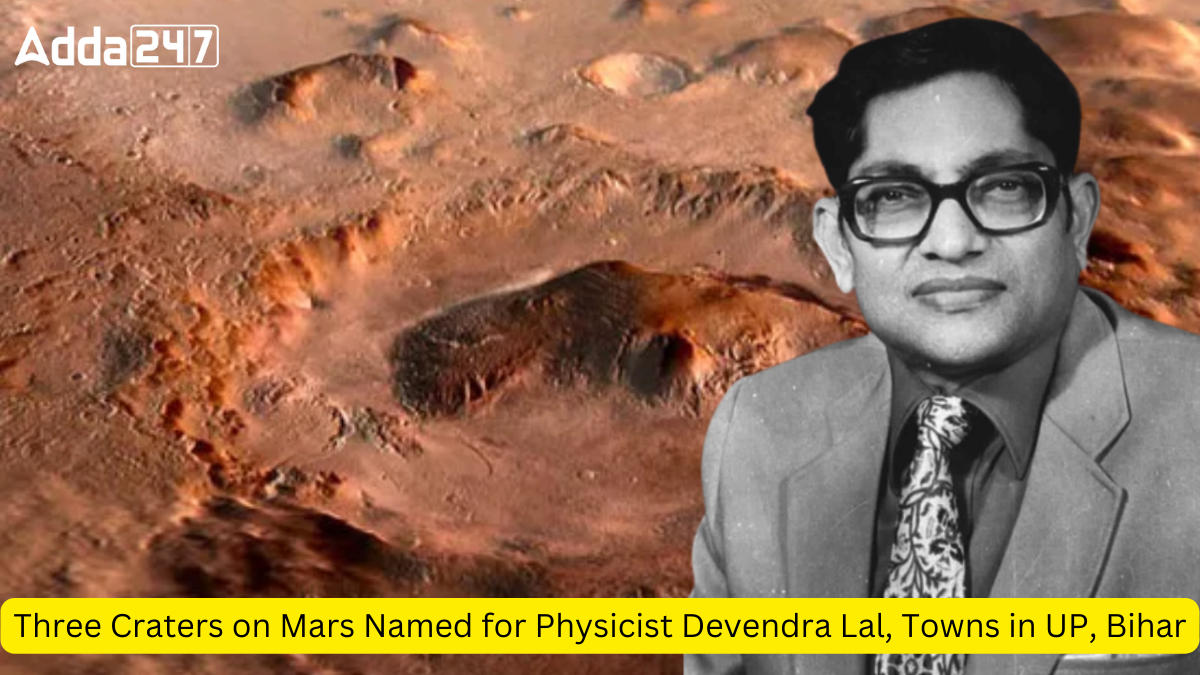‘Lal’, ‘Mursan’ and ‘Hilsa’. These are the names given to three craters on the surface of Mars recently discovered by Ahmedabad-based Physical Research Laboratory (PRL), that hint at the red planet’s wet past. Lal has been named after legendary cosmic ray physicist from Varanasi, the late Professor Devendra Lal. The other two have been named after Mursan town in UP’s Hathras district, and Hilsa town in Nalanda district of Bihar.
About Lal crater
The largest of these craters, spanning approximately 65 kilometres in diameter, has been named “Lal Crater” in honour of Professor Devendra Lal. Professor Lal, who served as the director of PRL from 1972 to 1983, made substantial contributions to the fields of cosmic ray physics and space research. His leadership and pioneering work have left an indelible mark on the scientific community, particularly in advancing our understanding of cosmic rays and their impact on planetary environments. In the case of Lal Crater, SHARAD identified substantial sedimentary deposits, providing compelling evidence that water once flowed across the Martian surface. This discovery contributes significantly to our knowledge of Mars’s past climate and potential for habitability, offering insights into the planet’s evolution over billions of years.
Other two craters
Adjacent to Lal Crater are two smaller craters: “Mursan Crater” and “Hilsa Crater.” Mursan Crater takes its name from the town of Mursan in Uttar Pradesh, India, while Hilsa Crater is named after the town of Hilsa in Bihar, India. Both towns hold cultural and historical significance in the region, and naming these craters after them serves as a nod to the rich cultural tapestry that informs our exploration and understanding of space. The discovery of these craters was facilitated by SHARAD (Mars SHAllow RADar sounder), a cutting-edge subsurface sounding radar mounted on NASA’s Mars Reconnaissance Orbiter (MRO). This technology allows scientists to probe beneath Mars’ surface, revealing details about its geological composition and history.
About Tharsis Volcanic Plateau
The three craters are situated in the Tharsis volcanic region of the Red Planet. Tharsis is a vast volcanic plateau centered near the equator in the western hemisphere of Mars. The region is home to the largest volcanoes in the Solar System. On the recommendation of the PRL, the International Astronomical Union (IAU) Working Group for Planetary System Nomenclature on June 5 approved naming the craters as “Lal” crater, “Mursan” crater and “Hilsa” crater, PRL director Anil Bhardwaj said. Mursan and Hilsa craters are around 10 km wide and superimposed on the eastern and western sides of the rim of the Lal crater.



 PM Modi Launches Three PARAM Rudra Super...
PM Modi Launches Three PARAM Rudra Super...
 Tech Mahindra and University of Auckland...
Tech Mahindra and University of Auckland...
 Indian Astronaut Shubhanshu Shukla Poise...
Indian Astronaut Shubhanshu Shukla Poise...
